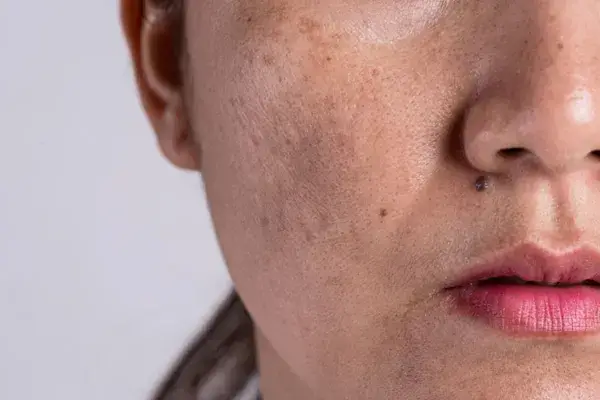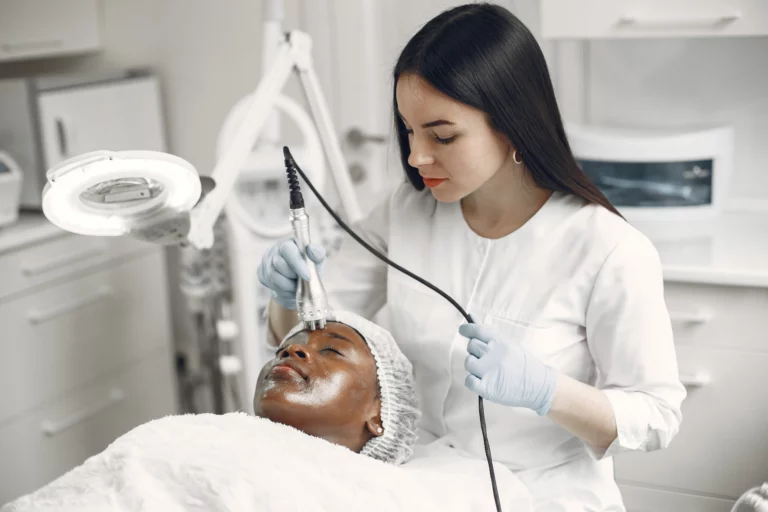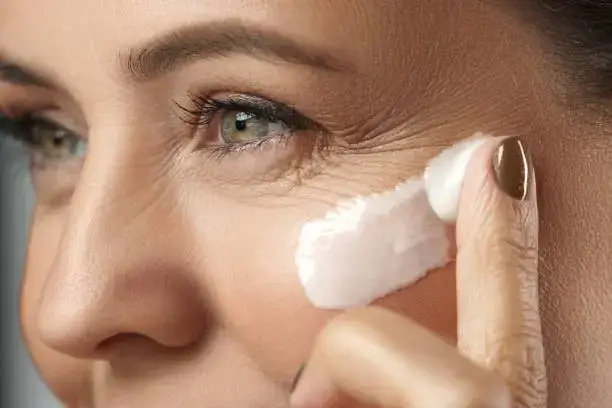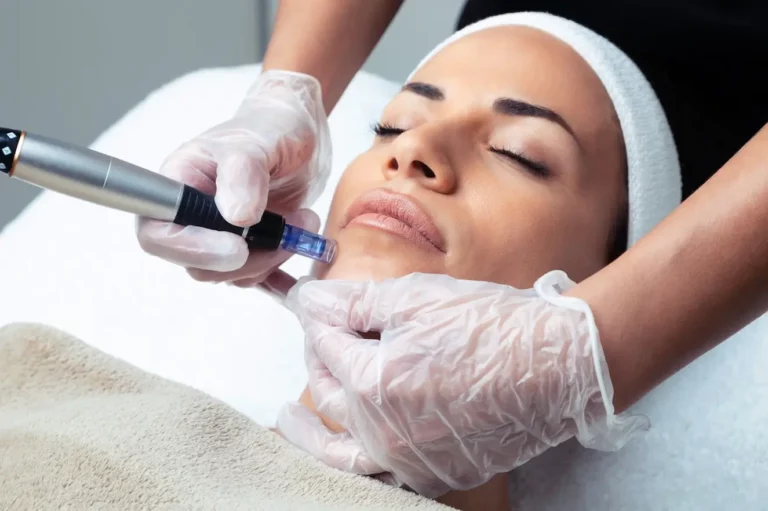Can Tanning Even Out Hyperpigmentation? Uncover the truth behind this myth.
Are you struggling with hyperpigmentation and seeking a solution for achieving a more even skin tone? It’s a common desire among many individuals, but the quest for flawless skin can sometimes lead to misconceptions, particularly regarding the role of tanning. Can tanning even out hyperpigmentation?
In this article, we’ll explore the age-old belief that tanning can help even out hyperpigmentation and uncover the truth behind this myth.
Hyperpigmentation, characterized by patches of darker skin due to excess melanin production, can be triggered by various factors such as sun exposure, hormonal changes, and inflammation. While some may turn to tanning as a quick fix to camouflage these areas, the reality is far more complex.
Tanning involves exposure to ultraviolet (UV) radiation, which stimulates melanin production in the skin, leading to a darker complexion. While this may initially seem to mask hyperpigmentation, it’s essential to understand the potential consequences of relying on tanning as a solution.
In this article, we’ll delve into the science behind hyperpigmentation and tanning, explore the risks associated with this approach, and provide alternative solutions backed by skincare experts.
By debunking the myths surrounding tanning and hyperpigmentation, we aim to empower you with the knowledge needed to make informed decisions about your skin health.
Join us as we unravel the truth about tanning and its impact on hyperpigmentation, paving the way for safer and more effective strategies for achieving a radiant, even complexion. Let’s dive in!
Understanding Hyperpigmentation
Hyperpigmentation is a common skin condition characterized by patches of darker skin caused by an overproduction of melanin, the pigment responsible for skin color.

To effectively address hyperpigmentation and make informed treatment decisions, it’s essential to have a deep understanding of its underlying causes and manifestations.
Hyperpigmentation can manifest in various forms, including sunspots, melasma, and post-inflammatory hyperpigmentation (PIH). Sun exposure, hormonal changes, inflammation, and certain medications are the primary triggers for these dark spots and patches.
Melasma, often called the “mask of pregnancy,” is characterized by symmetrical, brownish patches on the face, typically triggered by hormonal fluctuations. Sunspots, also known as solar lentigines or liver spots, are caused by prolonged sun exposure and commonly appear on sun-exposed areas like the face, hands, and shoulders.
Post-inflammatory hyperpigmentation (PIH) occurs due to skin trauma, such as acne, cuts, or burns, and can leave behind persistent dark marks.
Proper diagnosis of hyperpigmentation is crucial for determining the most effective treatment approach. Consulting with a dermatologist or skincare professional can help identify the specific type of hyperpigmentation and develop a tailored treatment plan.
While hyperpigmentation can be distressing, it’s important to remember that it’s often a response to external or internal factors. Sun protection, hormonal management (if applicable), and skincare regimens targeting inflammation and melanin production are vital components of managing hyperpigmentation.
By gaining a deeper understanding of hyperpigmentation, you’ll be better equipped to navigate the myriad treatment options available and make informed decisions about achieving a more even skin tone.
Read also: Does Waxing Cause Hyperpigmentation?
The Role of Tanning in Hyperpigmentation

Understanding how tanning affects hyperpigmentation is crucial for dispelling common misconceptions and making informed decisions about skincare. While some believe that tanning can help even skin tone by darkening hyperpigmented areas, the reality is more nuanced.
- Tanning Mechanism and Melanin Production:
Tanning occurs when the skin is exposed to ultraviolet (UV) radiation, triggering a series of biochemical reactions that stimulate melanocytes, the cells responsible for producing melanin.
Melanin is the pigment that gives skin its color, and an increase in its production leads to darker skin and hyperpigmentation.
- Impact on Hyperpigmented Skin:
Contrary to popular belief, tanning does not effectively address hyperpigmentation. In fact, it can exacerbate the condition by further darkening the already pigmented areas.
This is because UV radiation stimulates melanocytes indiscriminately, leading to uneven darkening and potentially worsening the appearance of hyperpigmentation.
- Risks of Tanning for Hyperpigmented Skin:
Beyond its ineffectiveness in treating hyperpigmentation, tanning poses significant risks for individuals with pigmentation concerns. Prolonged exposure to UV radiation increases the risk of sun damage, premature aging, and skin cancer.
Moreover, hyperpigmented areas are often more susceptible to sun damage, making them even more vulnerable during tanning sessions.
- Importance of Sun Protection:
Given the risks associated with tanning, sun protection becomes paramount for individuals with hyperpigmentation. Applying sunscreen with broad-spectrum protection and a high SPF daily can help prevent further darkening of pigmented areas and protect the skin from UV damage.
Additionally, seeking shade, wearing protective clothing, and avoiding peak sun hours can reduce sun exposure and reaction.
- Alternative Solutions for Hyperpigmentation:
Instead of relying on tanning, individuals with hyperpigmentation should explore safer and more effective treatment options. Topical treatments containing hydroquinone, retinoids, or vitamin C can help lighten hyperpigmented areas and promote skin renewal.
Dermatologists may also recommend professional procedures such as chemical peels, microdermabrasion, or laser therapy for more targeted treatment.
Patience and consistency are significant factors to incorporate. While trying to even out your skin, be consistent with your procedure for more effective skin renewal. I remembered the role of professionals; they should be your first consultant to stipulate the best method for your skin type.
Ypu may also love to read: The 5 Best Chemical Peels for Hyperpigmentation on Black Skin
Conclusion
In conclusion, while tanning may temporarily darken the skin and mask hyperpigmentation, it is not a viable solution and can worsen the condition in the long run.
By understanding the role of tanning in hyperpigmentation and prioritizing sun protection and evidence-based skincare, individuals can effectively manage and treat hyperpigmentation while safeguarding their skin health.
UV radiation not only fails to address hyperpigmentation effectively but also increases the likelihood of sun damage, premature aging, and skin cancer. As we’ve uncovered, the key to managing hyperpigmentation lies in understanding its underlying causes and implementing evidence-based skincare strategies.
By dispelling the myth of tanning and hyperpigmentation, we empower individuals to make informed decisions about their skincare, prioritizing health and safety above temporary solutions. Let’s embrace evidence-based approaches and journey towards radiant, even-toned skin without compromising skin health.
We value your insights and experiences in the realm of skincare and hyperpigmentation. We invite you to join the conversation if you found this blog post informative or have any questions, comments, or personal stories!
Don’t hesitate to share this information; it could benefit others. Together, we can debunk the myth of tanning and pave the way for a brighter, healthier future for our skin.
Glow right!








